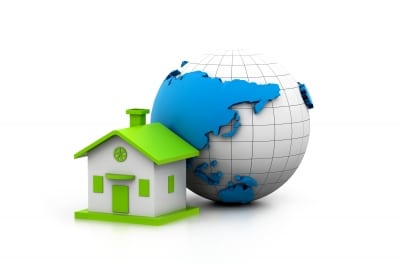 Now more than ever and on a much larger scale, there is a major emphasis on sustainable construction. Building structures that are eco-friendly, durable and which will provide long-term support to the people that use them is key to supporting the three main principles of “green construction,” which are people, planet and profit. It is not enough to create a structure that will only serve one of these interests.
Now more than ever and on a much larger scale, there is a major emphasis on sustainable construction. Building structures that are eco-friendly, durable and which will provide long-term support to the people that use them is key to supporting the three main principles of “green construction,” which are people, planet and profit. It is not enough to create a structure that will only serve one of these interests.
The importance of green construction
Traditional buildings, although structurally sound, are often made at the expense of the environment. The practices and materials are costly and wasteful, which is why many aged buildings have had major renovations performed to get them up to current environmental regulations. Given the major impact commercial buildings have in this regard (it has been estimated that they account for 1/5 of the United States’ energy usage and 1/3 of Europe’s greenhouse gas emissions), there is a strong need for better construction processes, of which many modern developers have a keen understanding.
What green construction entails
There are many facets of the process; the actual materials used are just one component of the picture. A major aspect of this concerns social sustainability, which takes into account the needs of the people who are using the physical structure. Developers are compelled to design buildings so that they can safely accommodate the greatest number of people; many modern day structures house both residential homes and commercial office spaces under one roof.
Creating a building in this way eliminates the need to destroy and rebuild, which requires a substantial amount of resources (labor and material costs). Another critical factor concerns the efficiency and safety of the structure’s internal systems. A properly functioning HVAC system electrical grid can prevent health hazards and reduce energy usage. Developers are even putting a higher focus on factors such as physical placement.
By putting major commercial structures in closer proximity to populated areas, one natural result is a reduction in employee and client commuting time, which in turn reduces vehicle carbon emissions. Thus, the end goal is to construct buildings only after all eco-friendly considerations have been made, regardless of how trivial they may seem in the wake of larger agendas.
Using better materials: local focus
There are numerous ecological construction materials that builders are implementing in their projects, and a major one is green lumber. This is lumber that comes specifically from sustainable forests that are managed by the U.S. Forest Stewardship Council. When these trees are removed, new ones are planted in place to promote healthy environmental practices.
Other effective materials include insulation (plastic and foam) that have higher R-values, meaning they are better apt to conserve heat and minimize air loss. When you consider the context in which these products are being installed – commercial buildings occupy thousands of square feet and have high heating and cooling demands – the need for conservation-friendly material becomes apparent.
Buying materials from local supplies also helps reduce transportation costs and minimizes environmental impact by keeping carbon emissions, notably those burned by fossil fuels, down.
Green Certification
The increased emphasis on green building has led to the creation of numerous organizations dedicated to ensuring developers are in line with current societal demands. The U.S. Green Building council initiated the Leadership in Energy and Environmental Design program (LEED), which grants certification to builders who meet pre-set requirements on their projects. Meeting and/or exceeding these standards is the aim, as such jobs are granted tax credits and are perceived by the public as corresponding with the issue of eco-friendly building in a grander sense.


